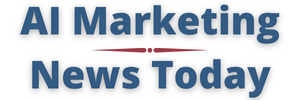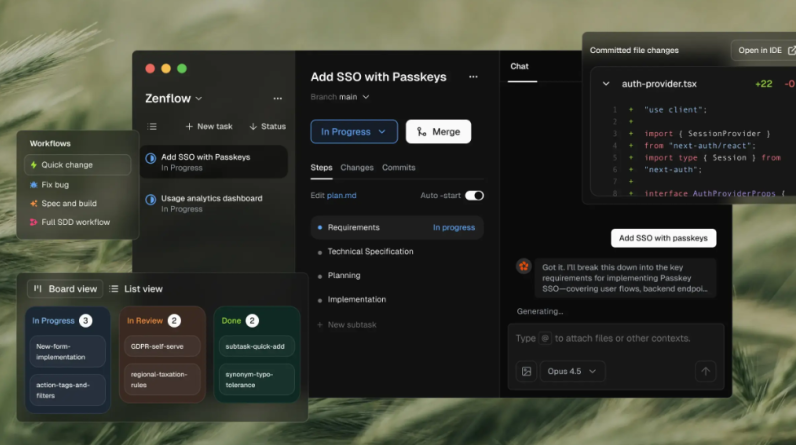
Ryan Gentry is the CEO of Drop Cowboy, helping businesses modernize workflows through communication and smart automation.
In today’s operating environment, time is the rarest resource. Most organizations still lose hours each week to manual, repetitive work: copying data between systems, chasing approvals, stitching together spreadsheets and responding to the same requests over and over. The result is slower cycles, higher error rates and teams that are busy but not necessarily productive.
The good news: you don’t need a moonshot program to see meaningful gains. With a focused approach, leaders can apply automation and AI to streamline core workflows, reduce avoidable rework and create clearer visibility for decision-making. Here’s a practical playbook to get started—and to scale responsibly.
1. Map Reality, Not Theory
Start with a lightweight “current state” map of one or two high-volume workflows (e.g., new-customer onboarding, invoice processing, support escalations). Document where work starts, who touches it, which tools are used and where it stops. Don’t overcomplicate this. The goal is to expose handoffs and rules that people follow but aren’t written down.
Look for three patterns:
• Repeated copy-paste steps
• Conditional rules that are already well understood (“if X, then Y”)
• Bottlenecks caused by single approvers or systems
Those are your first automation candidates.
2. Prioritize Simple, Frequent, Rules-Based Tasks
Early wins build organizational trust. Prioritize tasks that are frequent, structured and low-risk if something goes wrong. Think: data entry into your customer relationship management (CRM) platform, meeting scheduling, status notifications, service level agreement (SLA) reminders, routine report assembly or lead routing. Automating these frees people to do work that benefits from human judgment: complex conversations, exception handling and creative problem-solving.
A helpful rubric: impact + confidence + ease. If a step happens daily (impact), the rule is clear (confidence) and it touches only one or two tools (ease), it’s a prime candidate for automation.
3. Integrate The Tools You Already Use
Automation is orchestration. Rather than ripping and replacing systems, connect the stack you have. Use native integrations or an iPaaS/no-code platform to pass structured events between your CRM, marketing platform, ticketing system, finance tools and data warehouse. When systems share context automatically, you reduce errors from rekeying, shorten cycle times and make your reporting far more trustworthy.
Two practical tips:
• Choose one system of record for each entity (lead, invoice, ticket) to avoid update conflicts.
• Standardize naming and field types so data stays clean as it moves.
4. Layer AI For Decision Support, Not Autopilot
Once routine steps are automated, apply AI to help teams decide faster and with more context. Helpful uses include: summarizing long email threads or case histories, classifying inbound requests, extracting structured data from documents, highlighting anomalies in key performance indicators (KPIs) and drafting first-pass responses for human review.
Treat AI as an assistant: it proposes, humans dispose. Keep people squarely in the loop for approvals, escalations and any action with financial, legal or customer-facing risk. This preserves quality and builds internal confidence.
5. Put Governance In Place On Day One
Good governance prevents headaches later. Define who owns each workflow, the change process for edits and what gets logged (inputs, outputs, errors, approvals). Create a simple review cadence to retire automations that no longer match the business process. For AI use, document permissible data sources, red-flag categories (e.g., personally identifiable information, regulated data) and human-in-the-loop checkpoints.
Security matters too: use least-privilege credentials for integrations, rotate keys and centralize secrets. Small habits here pay big dividends.
6. Measure What You Automate
Automation should be measured like any other investment. Before you switch anything on, capture a baseline: current cycle time, error/rollback rate, touches per item, cost per transaction and employee time spent. After launch, compare like for like and publish results so teams see the benefit. Beyond efficiency, track secondary effects: faster responsiveness, fewer customer escalations and better data completeness.
7. Start Small, Ship Weekly, Expand Carefully
Large-scale transformations often fail because they demand too much change too quickly. Instead, begin with a short two-week pilot focused on a single workflow for one team. Collect feedback, address any issues and refine the process. Then, extend the same approach to the next related workflow. This focused, iterative method builds consistency and momentum while creating internal champions who can guide and support other teams.
8. Communicate What Automation Gives Back
Adoption rises when you explain what people get back. Be explicit: “This removes 90 minutes of manual updates each morning,” or “You’ll spend more time closing issues and less time formatting slides.” Pair that with training (short videos, quick-reference guides) and an easy way to suggest new automation ideas. Celebrate wins publicly—and credit the teams, not the tools.
9. Mind The Failure Modes
Three pitfalls to avoid:
• Automating a broken process: Fix the sequence before you speed it up.
• Shadow automations without owners: Everything needs a directly responsible individual and version control.
• AI without guardrails: Keep humans in approvals; log outputs for audit; limit sensitive inputs.
Scale Judgment, Not Just Speed
Automation removes toil; AI amplifies judgment. Together, they let companies run leaner while improving consistency and visibility. The organizations that win won’t be the ones that adopt the most tools—they’ll be the ones that turn clear rules into reliable workflows, connect the systems they already have and use AI where it truly helps people make better decisions. Start small, measure honestly and expand with care. Efficiency is the new competitive edge—and it’s within reach.
Forbes Business Council is the foremost growth and networking organization for business owners and leaders. Do I qualify?






